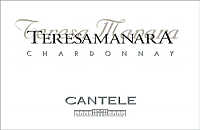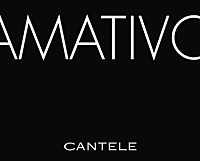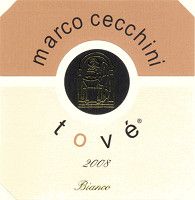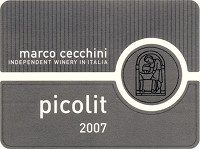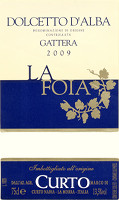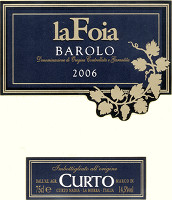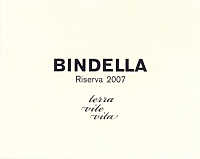|
The scene is usual: a wine is poured in a glass and then starts an analytical
process which, despite having different goals, it however aims to the goal of
defining whether we like that wine or not, if it meets our taste, our
expectations, our approval. It is commonly known, sensorial tasting of a wine -
or any other beverage or food - has many goals, from the simple personal
pleasure to the critical-analytical evaluation in order to determine its
correspondence to a quality or typical model. In any case, despite of the goals,
the practice of tasting requires proper tools - or supposed to be proper
according to the taster or the circumstance - in order to ensure the good
achievement of the goal we want. Tasting tools are generally represented by
tangible and physical objects. Indeed, this activity requires the use of other
“tools” as well, having nothing in common with the physical world.
Tasting a wine - and the same is true for any food or beverage - does not mean
to simply pour it in a glass, then observing, smelling, tasting. These acts,
which certainly are fundamental, represent just a small part of the process
making the sensorial evaluation of wine. The result of sensorial tasting is in
fact determined by a series of factors and elements, each of them being
indispensable and fundamental at the same way. The glass seems to be the main
tool with which a tasting is done, of course the most important tangible
tool. The shape of the glass is fundamental for the correct and proper
evaluation of wine's organoleptic qualities, not only the shape, but also the
material with which it was made from. Having no decorations, the glass must be
transparent and colorless in order to not affect wine appearance, while allowing
its proper observation, from clearness to color and its nuances.
Moreover, the shape of the glass is fundamental for the perception of wine
aromas - as a result of a precise geometric ratio between volume and surface of
contact - as well as affecting the initial impact on taste and its development.
We will not focus on the physical and mechanical qualities of a glass, as this
subject was covered many times in our pages. The goal of this article is to
consider the other aspects affecting sensorial tasting, in particular the ones
having no connection with the “physical world”, the ones about inner attitude
and specific qualities of the taster. If the glass is very important for the
proper appreciation of wine, likewise it is the mood of the taster, the
experience, concentration and culture, the relation of the taster with a glass
of wine.
Among factors associated to the physics of tasting, we should also mention the
fundamental role of temperature at which a wine is being tasted. This factor -
as it is commonly known - has the property of affecting the sensorial perception
of a beverage or food, by accentuating or attenuating both aromas and flavors.
As an examples, it is enough to remember that low temperatures attenuate the
development - and therefore the perception - of aromas, as well as the
perception of negative aromas and faults, whereas high temperatures tend to
excessively develop alcohol volatility and, in general terms, to make the
aromatic profile of the wine less elegant. Temperature strongly affects the
perception of flavors. As an example, high temperatures make tannins less
astringent, whereas low temperatures tend to exalt their aggressiveness and
harshness. The role of temperature in sensorial tasting, just like glasses, has
been covered in past issues of our magazine.
|
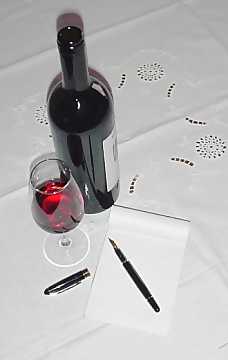 | |
| Glass, pen and block note: useful
tools for the taster | |
|
Sensorial tasting is not expressed by the accuracy and precision of tangible and
physical tools. The practice of sensorial tasting, which is mainly based on the
listening of stimuli caused by chemical, physiological and - last but not the
least - emotional phenomena, requires tools and conditions which are
mainly associated to the inner expression of the taster. Inner conditions and
predisposition - something no physical tool can express - however representing
an important value, maybe the one having the highest value. Among the main
elements belonging to this category we certainly have respect. Respect for wine,
its history, its land, its grapes, its personality and - important as well -
respect for the one who made that wine, fruit of a passion, of the
interpretation and a job done with commitment. It is too simple to judge with
the pretension of passing an ultimate and indisputable verdict without having
tried to understand first. it is too simple, as well as useless.
The lack of respect, and the world of wine review is full of these cases,
frequently brings to the expression of purely presumptuous opinions, to believe
one has the right to demolish or exalt the job of others by simply expressing an
opinion. This does mean to not respect others and, in particular, to believe one
can be in the stupid position of the one thinking to be superior than others -
and no one is like that - convinced his or her thought is absolute and
unquestionable. The opinion of who tastes and reviews wines certainly is not
absolute, it certainly is the fruit of a professional competence, but it however
does not express everyone's opinion. In case a taster does not like a wine, this
does not mean it is not good, it means the person who tasted it did not like it.
And this is different from denigrating the job and passion of others just
because it does not meet our ideas or understanding. Of course, there is the
right to express opinions about a wine, but we cannot believe this will be
agreed, or agreeable, by all, considered as an unquestionable and final
verdict.
Another fundamental factor is time. We cannot expect to judge a wine in a
reliable way in few seconds or in few minutes. There are tasters who say they
evaluate more than one hundred wines a day, other say to go even beyond this
figure. It is supposed these tasters do many things in the course of their day -
like everyone of us, after all - and if we suppose the time they dedicate to
tasting is an average of ten hours a day, this means tasting ten wines per hour,
a wine every six minutes, with no breaks. Can you possibly believe you can
express a reliable judgment in just six minutes? In case this would be
possible, we should also consider the huge impact of halo effect and of natural
and physiological tiredness of senses when they are stimulated for a long time
with no proper breaks. There are wines which can open up in few seconds - and
sometimes they make good surprises in case one has the patience to listen them
for a long time - while other wines are more shy and humble, they need more time
to tell their story. With wine is never wise to be in a hurry.
With wine is required the predisposition to listening, the curiosity of getting
to know the one in you have in front, with its qualities and its faults. In a
glass of wine you will never find a colored liquid only, result of the
fermentation of grape juice. When you uncork a bottle and you pour its content
in a glass, you are not just pouring some wine, you are pouring history, the
tale of a whole season, of sun and rain, of efforts and hopes, the renewed
relationship between man and land, between man and vine. «Wine is the song
of the earth upwards the sky» said Luigi Veronelli. In these words is
concentrated all the strength of wine, a beverage having a strong meaning for
the history of man and his relationship with earth, his land. Also for this
reason, the tasting of a wine cannot be done in few minutes, just because in a
wine - the one you are having in your glass - there is more than a beverage
fruit of the fermentation of grape juice.
Moreover, sensorial tasting is a practice requiring commitment and
concentration, conditions which can also be associated - in a certain way - to
the respect we owe to wine, its territory and to the one who made it. If you
taste a wine superficially, you cannot expect to know that wine - or, even
worse, to express an opinion - in a reliable and concrete way. It is like
believing to know someone very well after having talked or being in company of
this person for just few minutes, even worse, while looking elsewhere or talking
on the phone. Tasting is a total exercise completely involving a taster, it does
not want superficial behavior, or even worse, a haughty attitude. You should
always have a curious attitude, with the will of wishing to get to know
something new, with no prejudices, while allowing the wine to tell its story
from the beginning to the end.
On this regard, it should be said there are wines - just like persons - showing
impressive talent and quality, which can fascinate the one listening to it,
which can use the right words since the beginning of the conversation, in order
to positively impress the one who is listening to it. Indeed, this is just
another reason for paying more attention and spending more time to the tasting
of wine, in order to “force” it to talk longer, and then finding out if what
it says is true or it is just a disappointing fiction. The same is true for the
wines appearing as “shy”, those which do not open up in a minute and need more
time in order to be “confident” and to trust the one who wants to listen to
its story. Moreover, our mood strongly affects our will and predisposition to
listening. This is true with persons as well as with wine. When we are in a bad
mood, our predisposition to constructive listening is very compromised and
therefore we should avoid tasting a wine with a critical goal or for studying.
In order to become a good taster, you have to continuously taste, you have to
practice a lot, with commitment, passion and concentration. There is no other
way. The more you taste, the better those indispensable qualities making a
remarkable difference: memory and experience. These two qualities are
indispensable for understanding a wine, they allow to discern and understand
real quality from false quality, or - at least - which seems to be so. You
recognize a good wine as such for the fact you tasted good wines; therefore it
is very important to taste bad wines as well. Of course, there is also personal
taste, but objective quality can be evaluated only in case you use comparative
parameters, based on past experiences. Memory, another fundamental factor,
allows the comparison with wines belonging to the same territory or type in
order to define their correspondence to a typicality. A smell or a taste have
the power to recall to the mind situations, moments and experiences. In case of
wine, this recalls to the mind other wines tasted in the past, while activating
that useful process of comparison and learning.
As already said, tasting a wine does not mean to just pour it in a glass and to
analyze it with our senses. In a wine there is also the history of a territory,
of a culture, the expression of the vine in a specific place. These factors are
indivisible from wine. If you really want to understand a wine, it is
fundamental to understand the territory from which it originates, just because
every territory is a world on its own and to which is added the important job of
man and his way to interpret that territory and its grapes. For this reason, no
wine is equal to any other one, despite there are so many similar wines, not
because of territory's fault, but because of fashions followed for marketing
reasons. You should always remember when you are in front of a glass, you are
not tasting a wine only, you are tasting a territory and the expression of a
specific moment and season which, as such, are unrepeatable and unique. Just
because every wine is unique and unrepeatable, you should consider this concept
as one of the main tools of the taster. If you really want to understand. And
understanding requires, first of all, respect.
|


